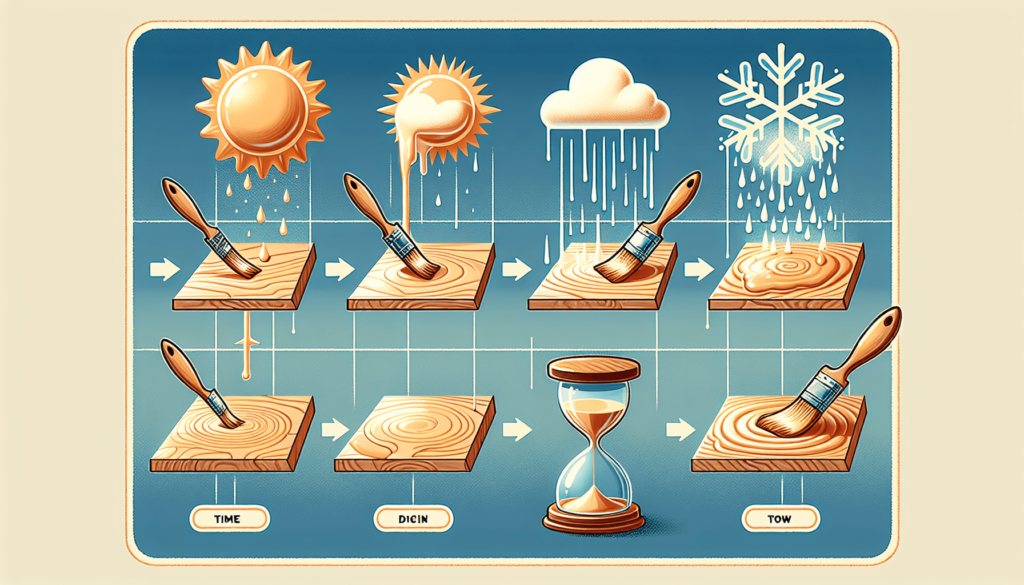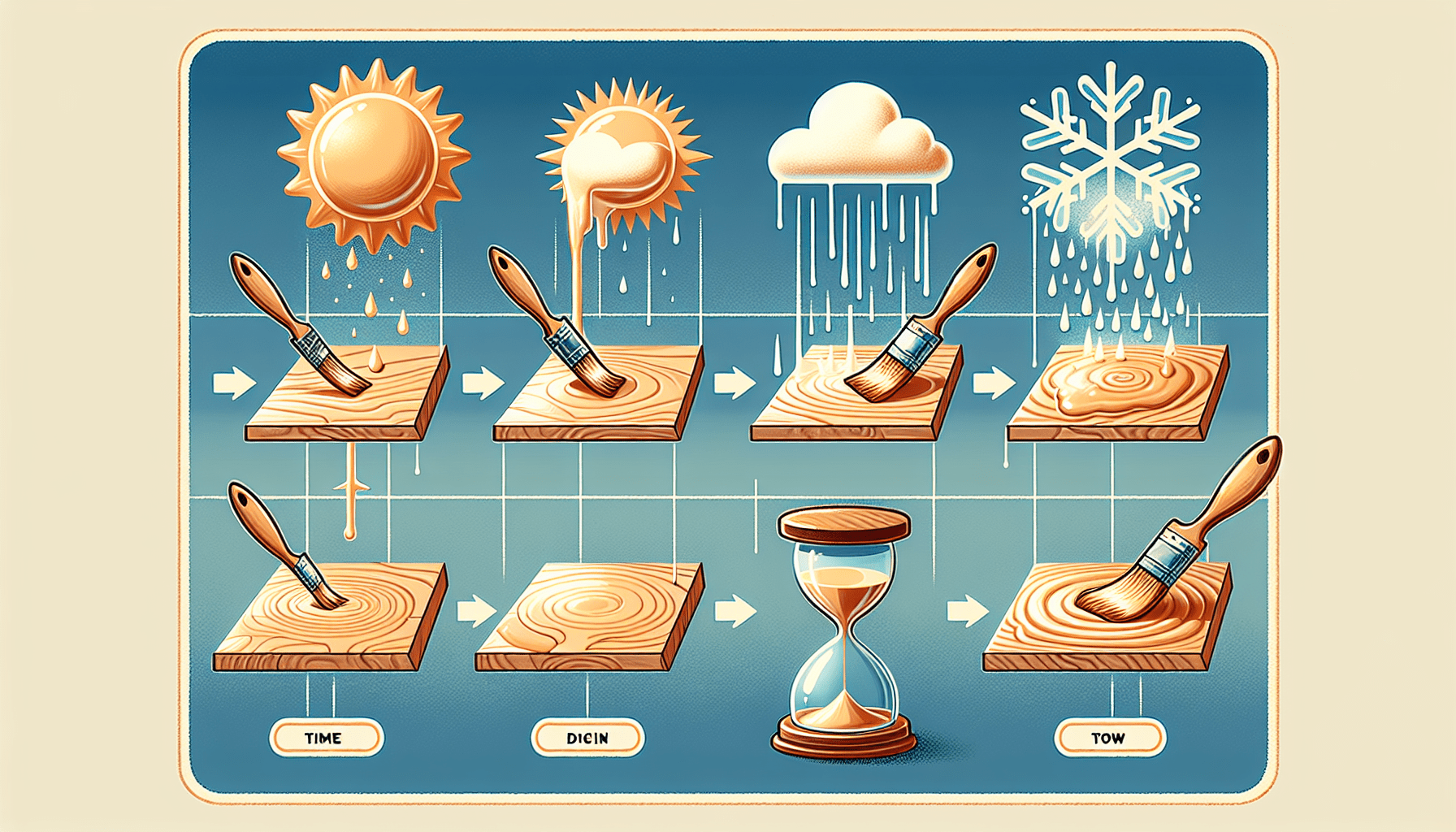Enamel paint is a popular choice among homeowners and professionals alike for its durability and smooth, glossy finish. Yet, one common question that arises is, “How long does it take enamel paint to dry?” The answer to this query is multifaceted, as drying times can vary depending on several factors, such as the type of enamel paint used, the thickness of the paint layer, and the environmental conditions in which the paint is applied. Understanding these factors and their impact on drying time is crucial for achieving flawless results in your painting projects.
Factors that Affect Drying Time of Enamel Paint
When it comes to enamel paint, there are several factors that can influence its drying time. Understanding these factors is essential for achieving the desired results and ensuring that your paint job turns out as expected. The five key factors that affect the drying time of enamel paint are the type of enamel paint used, environmental conditions, thickness of the paint layer, humidity level, and air circulation.
Type of Enamel Paint
The type of enamel paint you choose plays a significant role in determining its drying time. There are three main types of enamel paint commonly used: oil-based enamel paint, water-based enamel paint, and acrylic enamel paint. Each type has different drying characteristics due to the composition and chemical properties of the paint.
Environmental Conditions
The surrounding environmental conditions have a considerable impact on the drying time of enamel paint. Factors such as temperature and humidity can either speed up or slow down the drying process. Ideal conditions for faster drying typically involve moderate temperatures and low humidity levels. Extreme temperatures or high humidity can prolong the drying time significantly.
Thickness of the Paint Layer
The thickness of the paint layer applied is another crucial factor that affects drying time. Thicker layers of enamel paint will take longer to dry compared to thin coats. It is important to follow the manufacturer’s recommendations regarding the thickness of each coat to ensure proper drying and achieve the desired finish.
Humidity Level
Humidity plays a vital role in the drying time of enamel paint. Higher humidity levels tend to slow down the evaporation process of the paint solvents, resulting in a longer drying time. On the other hand, low humidity levels facilitate faster drying. In areas with high humidity, additional measures may be needed to accelerate the drying process.
Air Circulation
Adequate air circulation is crucial for drying enamel paint effectively. Good airflow helps in removing moisture from the surface of the paint, enabling it to dry faster. Insufficient air circulation can lead to prolonged drying times or even prevent the paint from drying evenly. It is recommended to keep doors and windows open or use fans to improve air circulation during the drying process.
Drying Time for Various Types of Enamel Paint
Understanding the drying time of different types of enamel paint is essential to plan your painting project effectively. Each type of enamel paint has unique characteristics that contribute to its drying time. Here is a breakdown of the drying time for the three main types of enamel paint.
Oil-based Enamel Paint
Oil-based enamel paint typically takes longer to dry compared to other types. Depending on the specific conditions, it can take anywhere from 8 to 24 hours for oil-based enamel paint to touch dry. However, it may take up to 7 to 10 days for the paint to harden fully and cure.
Water-based Enamel Paint
Water-based enamel paint has a shorter drying time in comparison to oil-based enamel paint. It generally takes about 1 to 2 hours for water-based enamel paint to touch dry. However, it can take up to 24 hours for the paint to harden and cure completely.
Acrylic Enamel Paint
Acrylic enamel paint has a relatively fast drying time compared to oil-based and water-based enamels. It usually takes around 30 minutes to 1 hour for acrylic enamel paint to touch dry. Complete hardening and curing may take up to 48 hours, depending on the environmental conditions and thickness of the paint.

Recommended Drying Time for Enamel Paint
Understanding the different stages of drying for enamel paint is crucial to ensure the best results and durability of the paint job. There are three main stages of drying for enamel paint: touch dry, hard dry, and full cure.
Touch Dry
The touch dry stage refers to when the paint has partially dried and is no longer wet to the touch. At this stage, the paint may still be slightly tacky but will not come off when lightly touched. Touch dry time can vary depending on the type of enamel paint used and environmental conditions. As a general guideline, oil-based enamel paint may take around 8 to 24 hours to reach the touch dry stage, while water-based and acrylic enamel paints may achieve touch dry in as little as 1 to 2 hours.
Hard Dry
The hard dry stage signifies that the paint has fully dried and hardened. At this point, the paint is no longer tacky and can withstand light pressure or contact. The hard dry time can vary significantly depending on the type of enamel paint, thickness of the paint layer, and environmental conditions. Oil-based enamel paint generally takes around 7 to 10 days to reach the hard dry stage, while water-based and acrylic enamel paints may achieve hard dry within 24 to 48 hours.
Full Cure
The full cure stage is the final stage of drying for enamel paint, where it reaches its maximum durability and can withstand more intense pressure or contact. Full curing can take longer than hard dry time, and it is crucial to allow sufficient curing time to ensure the best performance of the paint. Oil-based enamel paint typically takes approximately 7 to 10 days to fully cure, while water-based and acrylic enamel paints may achieve full cure within 7 to 14 days.
Tips for Accelerating Enamel Paint Drying
If you are looking to expedite the drying process of enamel paint, there are several techniques and tips that you can utilize. By following these recommendations, you can significantly reduce the drying time and achieve quicker results.
Using a Fan or Air Blower
One effective way to accelerate enamel paint drying is by using a fan or air blower to improve air circulation and increase the rate of evaporation. Positioning a fan near the painted surface helps in removing moisture from the paint, leading to faster drying. Ensure that the airflow is not too intense, as it may cause the paint to become uneven or create streaks.
Applying Thin Coats
Applying thin coats of enamel paint is essential for faster drying. Thick layers of paint take longer to dry and may result in uneven drying or prolonged curing time. By applying thin, even coats, you allow the solvents in the paint to evaporate more quickly, speeding up the drying process.
Adding a Drying Agent
Drying agents, also known as paint drying additives or paint drying accelerators, can be added to enamel paint to expedite the drying time. These additives contain chemicals that promote faster evaporation of solvents, reducing the overall drying time. It is important to follow the manufacturer’s instructions and recommended ratios when using drying agents.
Using Drying Aids
Certain drying aids, such as drying sprays or drying oils, can be used to enhance the drying time of enamel paint. These aids work by creating a thin barrier on the surface of the paint, preventing moisture from seeping in and slowing down the drying process. Drying aids are particularly useful in high humidity conditions or when quick drying is necessary.
Optimizing Temperature and Humidity
To speed up the drying time of enamel paint, it is crucial to optimize the temperature and humidity level in the painting area. Warmer temperatures facilitate faster evaporation, while lower humidity levels prevent moisture from lingering on the painted surface. Maintaining an optimal temperature of around 70 to 85 degrees Fahrenheit (21 to 29 degrees Celsius) and a humidity level below 50 percent can significantly reduce drying time.

Common Mistakes that Extend Drying Time
Several common mistakes can inadvertently extend the drying time of enamel paint. It is essential to avoid these errors to ensure timely completion of your painting project and achieve the desired results.
Applying Thick Coats
One of the most common mistakes that prolong drying time is applying thick coats of enamel paint. Thick layers of paint take longer to dry, as the solvents within the paint need more time to evaporate. It is crucial to follow the manufacturer’s recommendations regarding the thickness of each coat to ensure proper drying and avoid extended drying times.
Improper Ventilation
Inadequate ventilation during the drying process can significantly extend the drying time of enamel paint. Without proper airflow, moisture will not evaporate efficiently, leading to longer drying times or even incomplete drying. Ensure that the painting area has sufficient ventilation, such as open windows or fans, to facilitate faster drying.
High Humidity Conditions
High humidity conditions can greatly prolong the drying time of enamel paint. The excess moisture in the air slows down the evaporation process, preventing the paint from drying effectively. It is crucial to choose a time with lower humidity levels to paint or utilize techniques such as fans and dehumidifiers to reduce humidity in the painting area.
Insufficient Curing Time
Failing to allocate sufficient curing time can lead to issues with the final finish and durability of the enamel paint. Rushing the process by applying additional coats or subjecting the paint to stress before it has fully cured can result in peeling, cracking, or poor adhesion. It is essential to follow the manufacturer’s recommendations for curing time and avoid premature handling or exposure.
Effects of Humidity on Enamel Paint Drying Time
Humidity levels play a significant role in the drying time of enamel paint. The moisture content in the air affects the drying process by either slowing it down or facilitating faster drying. Understanding the effects of high and low humidity is crucial for planning your painting project effectively.
High Humidity
High humidity conditions significantly prolong the drying time of enamel paint. The excess moisture in the air hinders the evaporation of solvents, preventing the paint from drying effectively. In high humidity conditions, it is essential to take measures to accelerate drying, such as using fans, dehumidifiers, or drying aids. Additionally, it is important to allow sufficient curing time to ensure the paint fully hardens and cures.
Low Humidity
Low humidity conditions generally facilitate faster drying of enamel paint. The lower moisture content in the air allows the solvents in the paint to evaporate more quickly, expediting the drying process. However, extremely low humidity levels can cause the paint to dry too quickly, leading to issues such as poor leveling or brush marks. It is important to strike a balance and maintain a moderate humidity level during the drying process.
How to Test if Enamel Paint is Dry
Before moving on to subsequent coats or handling the painted surface, it is essential to ensure that the enamel paint has dried adequately. There are a few simple tests you can perform to determine if the paint is dry:
Check for Tackiness
One way to test if enamel paint is dry is by lightly touching the painted surface with your finger. If the paint is tacky or leaves residue on your finger, it is still wet and needs more time to dry. Dry enamel paint should not feel sticky or leave any marks.
Smudge Test
Another test is to gently press a clean cloth against the painted surface and slightly move it back and forth. If the paint smudges or transfers onto the cloth, it indicates that the paint is not dry yet. In contrast, if the paint remains intact and does not smudge, it is dry.
Test on an Inconspicuous Area
If you are unsure whether the enamel paint has fully dried, you can perform a test on an inconspicuous area. Lightly press your finger or a clean cloth against the painted surface and observe if the paint smudges or leaves any marks. Testing on a hidden or less visible area allows you to determine the dryness without compromising the final finish.
Factors to Consider Before Applying a Second Coat
Applying a second coat of enamel paint is a common practice to achieve a more even and vibrant finish. However, it is crucial to consider certain factors before proceeding with the additional coat to avoid any issues or rework.
Recommended Wait Time
The recommended wait time between applying the first and second coat of enamel paint depends on the specific product and manufacturer’s instructions. In general, it is advisable to allow the first coat to dry fully before adding the second coat. The recommended wait time can vary depending on factors such as type of enamel paint, environmental conditions, and thickness of the first coat. It is essential to refer to the product label or contact the manufacturer for specific recommendations.
Paint Texture and Thickness
Before applying a second coat, it is important to assess the texture and thickness of the first coat. If the first coat appears uneven or there are visible brush marks or streaks, it may require slight sanding or leveling before applying the subsequent coat. Ensuring a smooth and consistent first coat enables better adhesion and provides a solid foundation for subsequent coats.
Humidity Level
Humidity levels also play a role in determining when to apply a second coat of enamel paint. In high humidity conditions, it is advisable to wait longer between coats to allow for proper drying. Lower humidity levels allow for faster drying, which may permit a shorter wait time between coats. It is essential to consider the humidity level during the drying process to ensure optimal results and minimize the risk of issues such as poor adhesion or surface defects.
Methods for Speeding up Enamel Paint Full Cure
While enamel paint may reach the touch dry and hard dry stages within a relatively short time, achieving full cure can take longer. However, there are a couple of methods that can be used to speed up the full curing of enamel paint.
Heat Curing
Heat curing, also known as baking, involves subjecting the painted surface to controlled heat to accelerate the curing process. This method is suitable for certain types of enamel paint, such as automotive enamels, that are designed to withstand higher temperatures. Care must be taken to follow the manufacturer’s guidelines and recommended curing temperature to avoid overheating, discoloration, or other damage to the paint.
Using a Dehumidifier
Using a dehumidifier in the painting area can help reduce the humidity levels, promoting faster curing of enamel paint. By removing excess moisture from the air, the paint can dry more efficiently. It is important to monitor the humidity levels and adjust the dehumidifier settings accordingly to maintain an optimal environment for drying.
Conclusion
When working with enamel paint, understanding the factors that affect drying time is crucial for achieving the best results. Factors such as the type of enamel paint, environmental conditions, thickness of the paint layer, humidity level, and air circulation all play a significant role in determining the drying time. By following the recommended drying times and employing techniques to accelerate the drying process when necessary, you can ensure a successful and durable enamel paint job. Remember to test the paint for dryness before applying subsequent coats and allow sufficient time for full curing to achieve the desired finish. With proper knowledge and techniques, you can master the art of enamel paint application and create stunning, long-lasting results.


